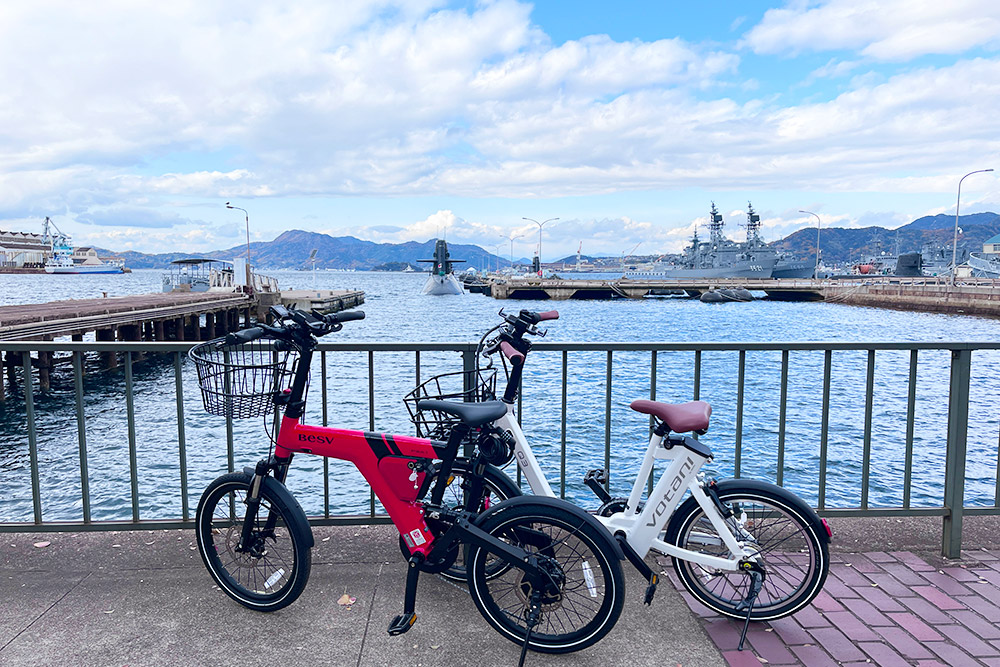This route along the coastline offers views of shipyards and cranes that are synonymous with Kure. You may smell and hear the scraping of metal from factories and, depending on the time of day, hear the sound of trumpets and steam whistles from ships anchored in the bay. Take in the sight of the Seto Inland Sea and historic spots on your right, and catch a glimpse of the daily lives of the locals on your left. Follow the route while feeling the sea breeze.
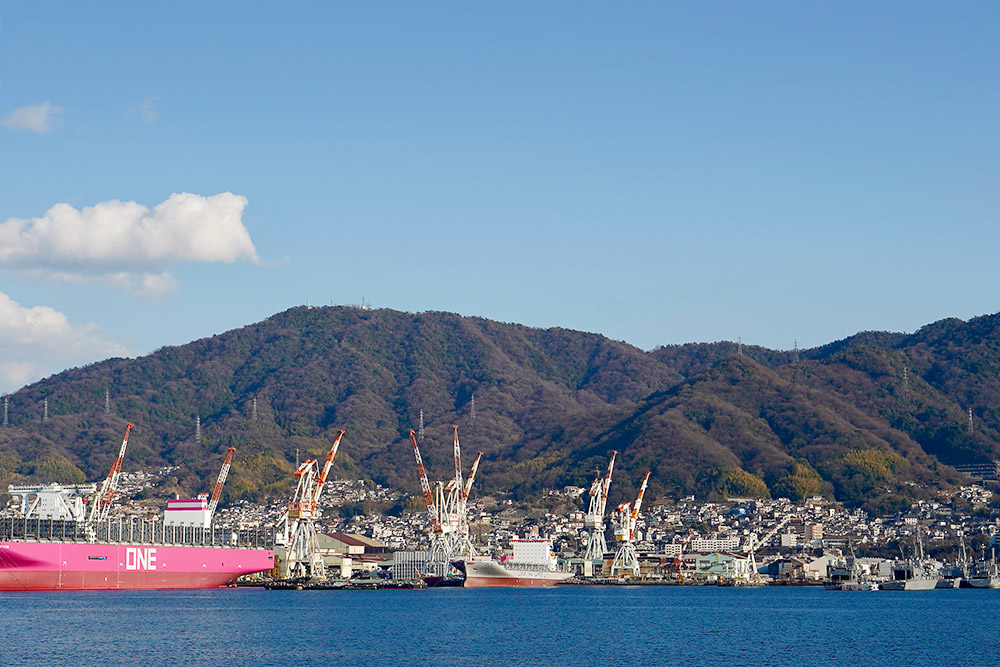
Rent an E-bike you like, and let’s get going!
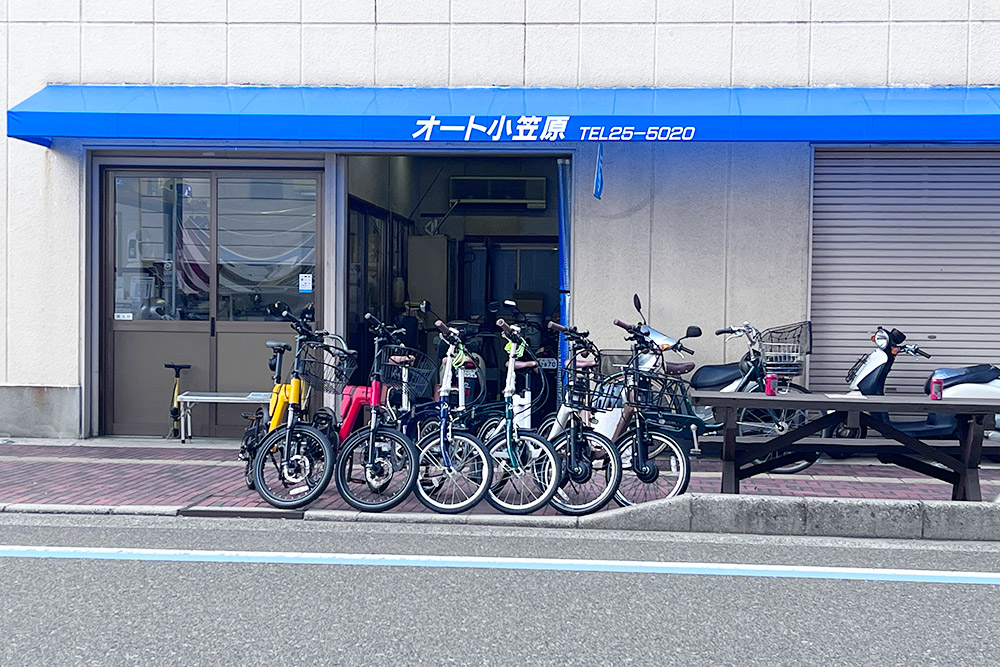
10 minutes
Take a ride down Kure City Art Museum Street, which has been selected as one of the 100 Best Roads in Japan, and you will see an elegant red brick structure. It was built to serve as the building of the former Kure Naval District when the Imperial Japanese Navy (IJN) existed. The building is now a facility of the Japan Self-Defense Forces. Visitors can see the structure up close with advance reservations.
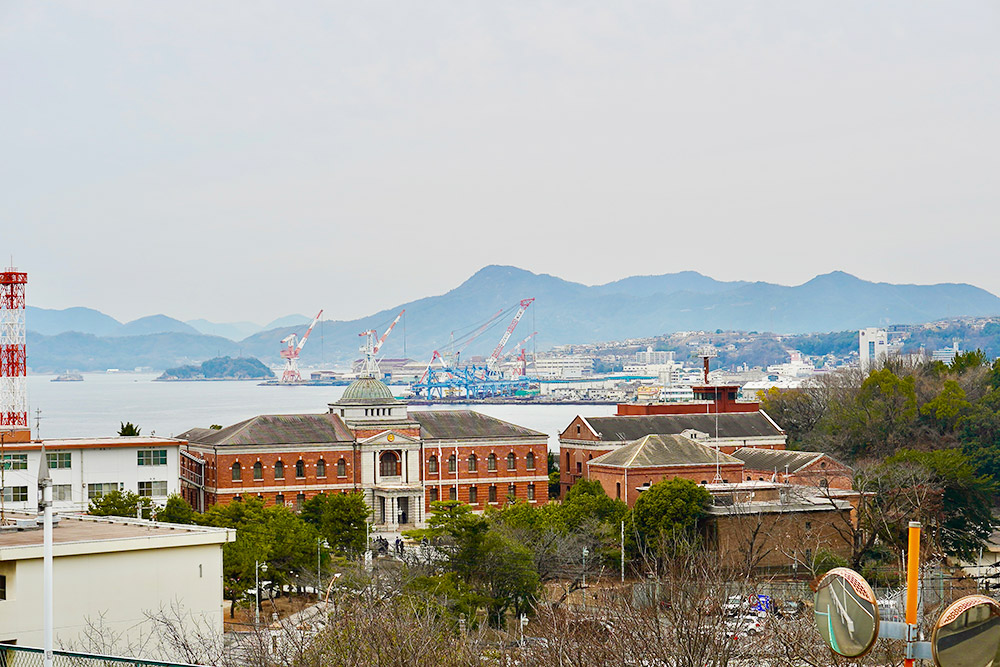
5 minutes
As the name suggests, from here visitors can look out over Kure Bay and immerse themselves in the history of Kure. From the pedestrian bridge that spans the hill, visitors can still see the original large roof of the dock where the battleship Yamato was constructed. At the dock next to it, you can get an up-close look at newly built ships and vessels under repair, creating a breathtaking view.
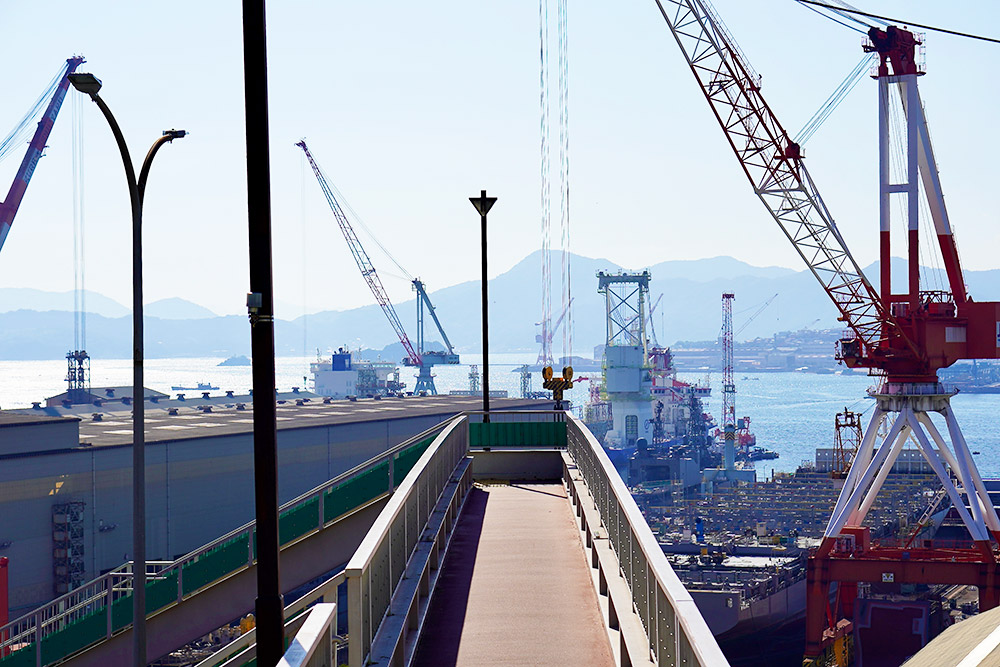
5 minutes
As you pedal away, you will see a row of prewar buildings that have survived the air raids. After you pass these buildings and round a curve, you will suddenly see vessels anchored in front of you. You have reached the entrance to the Kure Maritime Self-Defense Force area.
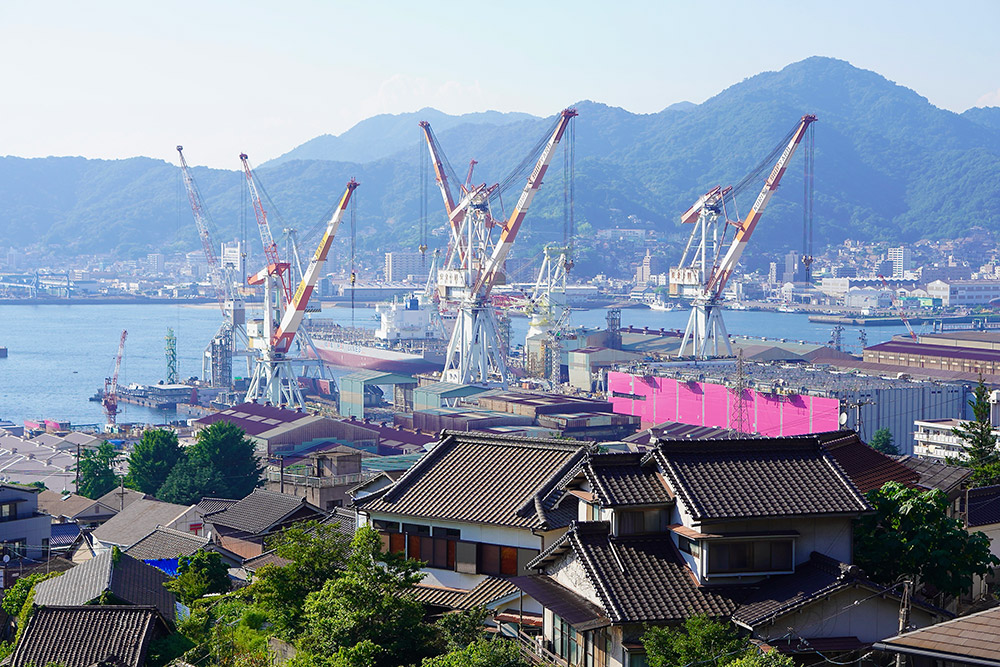
5 minutes
Turnaround Point: This is the only park in Japan where you can see submarines (vessels) right in front of you. Have an up-close look at the magnificent stone revetment from the days of the Kure Naval Arsenal and a crane that was used to load torpedoes. The brick warehouses nearby are from the Meiji era (1868–1912) and are still used by private companies as red brick warehouses. If you have time, ride your bike further down the factory area, which is lined with buildings from the IJN period.
